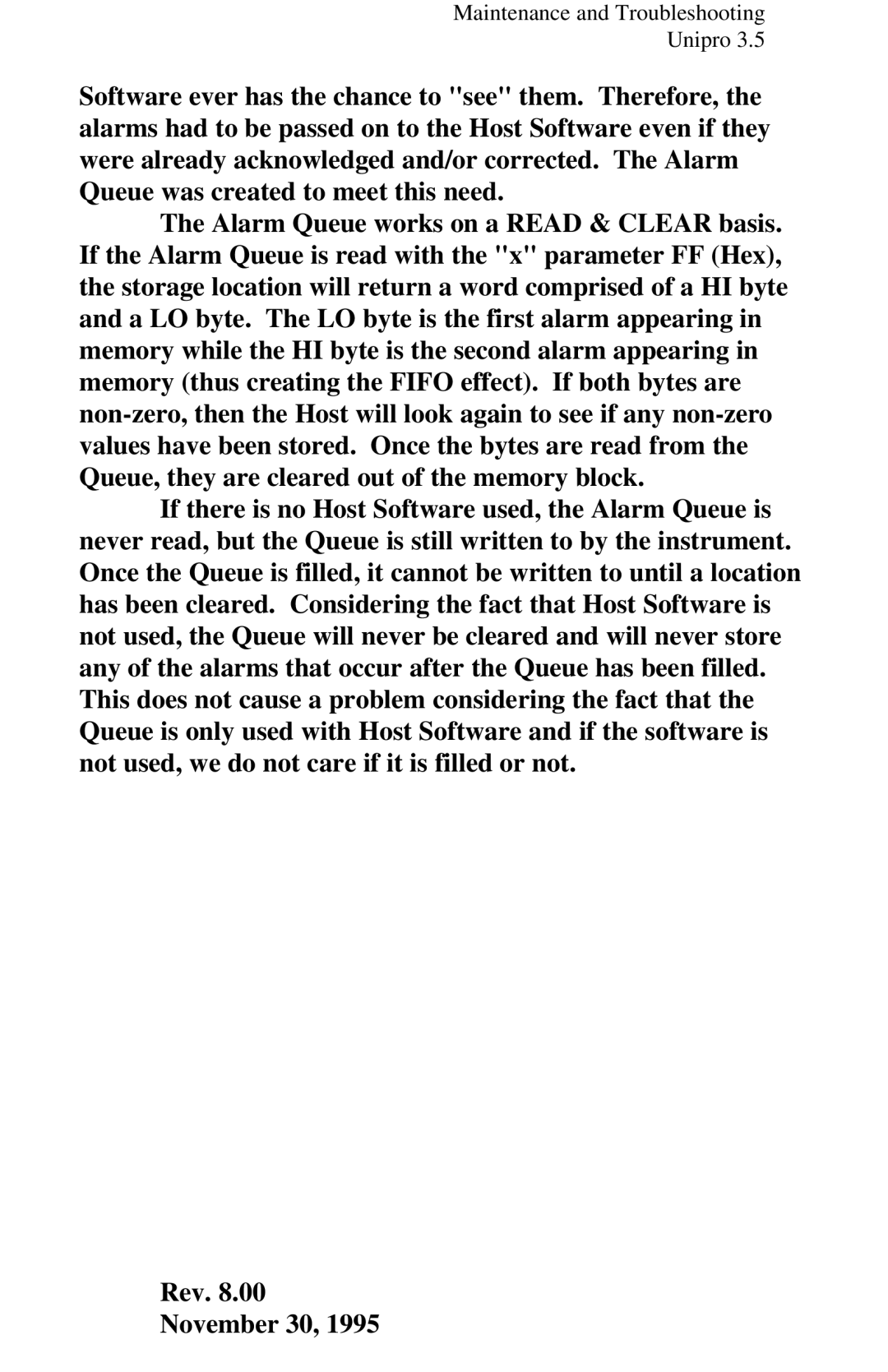Maintenance and Troubleshooting
Unipro 3.5
Software ever has the chance to "see" them. Therefore, the alarms had to be passed on to the Host Software even if they were already acknowledged and/or corrected. The Alarm Queue was created to meet this need.
The Alarm Queue works on a READ & CLEAR basis. If the Alarm Queue is read with the "x" parameter FF (Hex), the storage location will return a word comprised of a HI byte and a LO byte. The LO byte is the first alarm appearing in memory while the HI byte is the second alarm appearing in memory (thus creating the FIFO effect). If both bytes are
If there is no Host Software used, the Alarm Queue is never read, but the Queue is still written to by the instrument. Once the Queue is filled, it cannot be written to until a location has been cleared. Considering the fact that Host Software is not used, the Queue will never be cleared and will never store any of the alarms that occur after the Queue has been filled. This does not cause a problem considering the fact that the Queue is only used with Host Software and if the software is not used, we do not care if it is filled or not.
